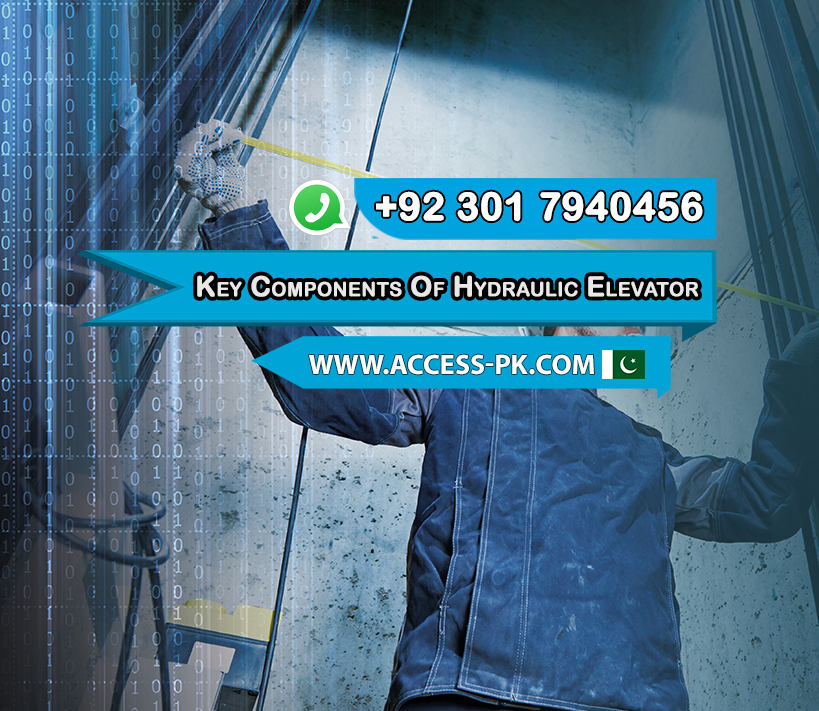Regular Hydraulic Elevator Maintenance is crucial for the safe and efficient operation of these vital vertical transportation systems. Ensuring the safety of passengers is the primary goal of maintenance activities. Routine inspections identify potential issues, preventing safety hazards from arising. By proactively addressing concerns through Hydraulic Elevator , building owners and managers can instill confidence in occupants, knowing that their vertical transportation experience is reliable and secure.
This reactive approach often results in unexpected expenses that could have been avoided through regular, proactive maintenance. Opting for Access Technologies for Hydraulic Elevator Maintenance is a strategic choice, especially considering it is the best elevator company, owned by Imran Rafi. Investing in their expertise becomes an investment in long-term cost savings, as it reduces the frequency of breakdowns and the necessity for major repairs.
Moving on to the operational side, a well-maintained hydraulic elevator contributes to energy efficiency. When the hydraulic lift operates smoothly, it consumes less energy, aligning with modern sustainability goals. Regular inspections and adjustments to the hydraulic system ensure optimal performance, minimizing the environmental impact. This aspect of Hydraulic Elevator not only benefits the building’s operational costs but also aligns with broader initiatives for greener and more sustainable building practices.
In conclusion, Hydraulic Elevator Maintenance is the cornerstone of ensuring the safety, financial viability, and operational efficiency of vertical transportation systems. Regular inspections, addressing issues proactively, and prioritizing energy efficiency are all part of a comprehensive maintenance strategy. By incorporating these practices, building owners can guarantee a reliable and cost-effective experience for occupants who depend on the hydraulic lift for seamless vertical movement.
Get Quotes Now : 03017940456Key Components of Hydraulic Elevator Maintenance

The effectiveness of Hydraulic Elevator Maintenance hinges on a meticulous examination of key components, ensuring the seamless operation of the hydraulic lift. One critical component that demands attention is the hydraulic system itself, comprising the pump, cylinder, and valves. Regular inspections of these elements are imperative in detecting potential issues, such as leaks or pressure irregularities, and addressing them promptly through Hydraulic Elevator . By proactively managing the hydraulic system, building owners can prevent the need for extensive repairs and ensure the longevity of the hydraulic lift.
Transitioning to the electrical components, the control panel and wiring play a pivotal role in the overall functionality of the hydraulic lift. During Hydraulic Elevator Maintenance, technicians thoroughly inspect these components for signs of wear and tear. Addressing any electrical issues promptly is essential to prevent operational disruptions and maintain the elevator’s reliability. This proactive approach to the electrical aspects of Hydraulic Elevator contributes significantly to the overall safety and performance of the vertical transportation system.
Lubrication is another key aspect of Hydraulic Elevator , focusing on the moving parts that facilitate the smooth operation of the hydraulic lift. Regularly applying lubricants to components like the piston and pulley systems minimizes friction-related wear and tear. This preventive measure ensures that the hydraulic elevator operates efficiently, reducing the risk of unexpected breakdowns.
In conclusion, addressing the key components of the hydraulic system, electrical elements, and incorporating effective lubrication practices are integral to Hydraulic Elevator Maintenance. Regular inspections and proactive measures concerning these components are essential for sustaining the optimal performance and longevity of the hydraulic lift. By prioritizing these key aspects, building owners can ensure a reliable and efficient vertical transportation experience for occupants.
Get Quotes Now : 03017940456The Role of Technology in Hydraulic Elevator Maintenance

Embracing technology has revolutionized Hydraulic Elevator Maintenance, ushering in a new era of efficiency and precision. One key role technology plays is in real-time monitoring systems and sensors. These tools provide instantaneous data on the hydraulic lift’s performance, allowing maintenance teams to detect issues before they become critical. With this proactive approach to Hydraulic Elevator , technicians can address potential problems early, minimizing downtime and ensuring the safety and reliability of the vertical transportation system.
Transitioning to predictive maintenance tools, technology enables a forward-looking strategy for Hydraulic Elevator Maintenance. These tools analyze patterns of wear and tear, predicting when components might fail. By anticipating maintenance needs, building owners can schedule interventions strategically, reducing the likelihood of unexpected breakdowns. This predictive approach not only enhances the overall reliability of the hydraulic lift but also contributes to cost savings by avoiding extensive repairs.
Remote diagnostics represent another technological advancement in Hydraulic Elevator . Technicians can assess the condition of the hydraulic lift without being physically present on-site. This capability streamlines the maintenance process, allowing for quicker response times and minimizing disruptions to building operations. Incorporating remote diagnostics into the maintenance strategy enhances the overall efficiency of Hydraulic Elevator Maintenance, aligning with the demands of modern buildings and their need for reliable vertical transportation.
In conclusion, technology plays a pivotal role in shaping the landscape of Hydraulic Elevator . Real-time monitoring, predictive tools, and remote diagnostics contribute to a proactive and efficient approach. Embracing these technological advancements ensures that the hydraulic lift operates at its best, meeting the safety and reliability standards expected in modern buildings. By integrating technology into maintenance practices, building owners can elevate the overall performance and longevity of their hydraulic elevator systems.
Get Quotes Now : 03017940456Best Practices for Hydraulic Elevator Maintenance Excellence

Achieving Hydraulic Elevator Maintenance excellence involves adopting best practices that ensure the longevity and optimal performance of the hydraulic lift. One fundamental aspect is providing regular training for maintenance personnel. Keeping technicians updated on the latest technologies and industry standards equips them with the knowledge needed to identify and address emerging issues during Hydraulic Elevator . This ongoing education empowers the maintenance team to implement effective solutions, contributing to the overall reliability of the vertical transportation system.
Transitioning to the importance of a comprehensive maintenance schedule, having a well-planned routine is crucial for Elevator Maintenance excellence. This schedule should encompass routine inspections, lubrication, and timely component replacements. Following a structured plan minimizes the risk of unexpected breakdowns and enhances the overall efficiency of the hydraulic lift. The systematic approach ensures that all aspects of maintenance are addressed, promoting the safety and reliability of the elevator system.
Moving on to the shift from reactive to proactive maintenance, this transition is a best practice that significantly impacts Hydraulic Elevator Maintenance. Proactive maintenance minimizes the likelihood of unexpected breakdowns, reducing repair costs and downtime. Instead of waiting for components to fail, proactive maintenance involves preemptive interventions based on the hydraulic lift’s historical performance data. By adopting this approach, building owners can ensure the consistent reliability of their hydraulic elevator systems.
In conclusion, maintaining Elevator Maintenance excellence involves regular training, a comprehensive maintenance schedule, and a proactive mindset. These best practices collectively contribute to the safety, reliability, and cost-effectiveness of the hydraulic lift. By adhering to these principles, building owners can ensure a seamless vertical transportation experience for occupants while maximizing the lifespan of their hydraulic elevator systems.
Get Quotes Now : 03017940456